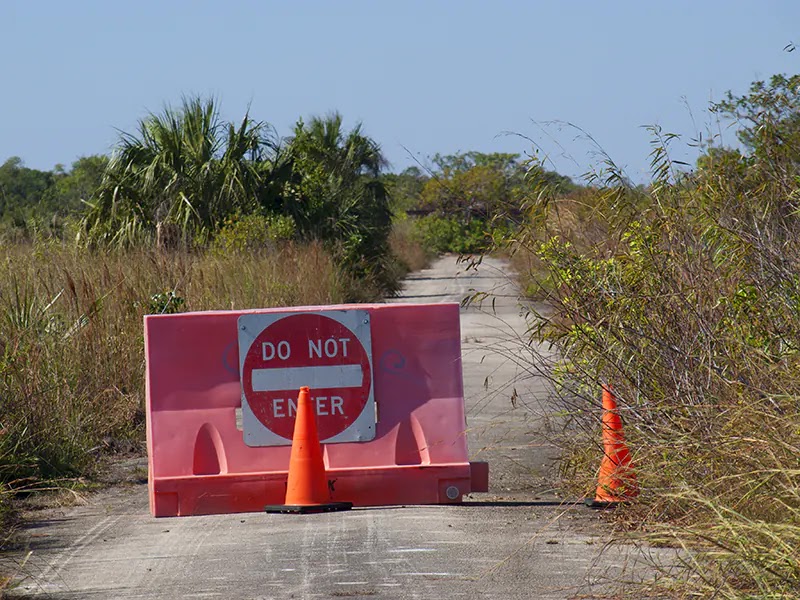Forgotten Books: The Land of Fetish
Alfred Burdon Ellis spent a long time in Africa. The British officer fought in the Zulu war and the Third Anglo-Ashanti War - he was wounded in 1878. Ellis also served as governor of Sierra Leone in 1892. A year later, he was sent to fight the Malian Sofas - "sofa" meant warrior in the Mandinka language of the Mali Empire. On his way back, he got the fever and died in 1894 in Tenerife, Canary Islands. Ellis wrote many books and his ethnographic work in West Africa was well known during his time. His texts are usually signed as A. B. Ellis.
The Land of Fetish was published in 1883. The book recounts his time as Captain of the First West Indian Regiment in West Africa, a position he got in 1879. The text contains interesting descriptions of African cultures and historical events.
These are some excerpts:
About his visit to the ruins of a British fort destroyed by the French in the 17th century.
About an hour’s row up the river from Bathurst is the island of St. James, which was the site of the first British settlement established in the Gambia. This isle, now so silent and deserted, was, towards the end of the seventeenth century, the scene of much bloodshed.
Description of the Amazons of the king of Dahomey - Ellis reports that they existed since 1728.
The Amazons are the élite of the Dahoman army, and they have shown at Abbeokuta and elsewhere that they can fight with a ferocity that more resembles the blind rage of beasts of prey than human courage. Their number is variously estimated at from 15,000 to 20,000, and their warlike spirit is kept alive by a yearly war which commences every April.
All wore cartridge-belts and pouches, and carried long knives or machetes, with which it is said they mutilate the wounded in a horrible manner. Several of them were disfigured with the scars of long gashes on the cheeks and forehead, the usual West African sign of slavery; all of them looked wiry and muscular, and were covered with the cicatrices of old wounds.
The tale of his encounter with a sacred python escaped from a snake-house of Dahomey - pythons were venerated in this kingdom.
I was sleeping in a grass hammock slung from the joists of the roof, when I was awakened by something pressing heavily on my chest. I put out my hand and felt a clammy object. It was a snake. I sprang out of the hammock with more agility than I have ever exhibited before or since, and turned up the lamp that was burning on the table. I then discovered that my visitor was a python, from nine to ten feet in length, who was making himself quite at home, and curling himself up under the blanket in the hammock.
Next morning I went to see the snake-house. It is a circular hut, with a conical roof made of palm-branches, and contained at that time from 200 to 250 snakes. They were all pythons, and of all sizes and ages; the joists and sticks supporting the roof were completely covered with them, and looking upwards one saw a vast writhing and undulating mass of serpents.
The human sacrifices in the kingdom of Dahomey.
Sometimes, too, the King of Dahomey sends an ambassador, arrayed in the proper insignia, with a gorgeous umbrella and a rich dress, to his good friend the ocean. This ambassador is taken far out to sea in a canoe, and is then thrown overboard and left to drown or to be devoured by sharks.
The great annual custom, which takes place towards the middle of the month of May, and lasts for six weeks, is the most interesting. To this custom all the subjects of the king are invited, and all travellers or strangers in the kingdom are ordered to the capital. The first day is taken up by levées, a review of the Amazons, and the usual dancing, singing, and firing of guns; all of which takes place in the large square, or market-place, of Abomey. The victims to be sacrificed are confined in a wattle hut, called the victim-house, situated in this square; each prisoner being bound to the stool on which he sits, and further prevented from attempting to escape by long ropes fastened securely to his limbs and stretched tightly to the beams forming the shed. They are attired in long red caps adorned with festoons of ribbons, and wear white shirts ornamented at the neck and sleeves with scarlet, and with a large scarlet patch sewn on over the region of the heart.
The third day of the custom is known as “Ek-gai nu Ahtoh,” or “The throwing of cowries from Ahtoh”; Ahtoh being an immense raised platform which is built in the market-place specially for this ceremony.
...the victims for sacrifice are brought up on to Ahtoh, carried on men’s heads, and taken to the edge of the platform to be shown to the mob. They are greeted with wild yells and cries, the executioners thronging to the foot of the platform and brandishing their knives, while the crowd arm themselves with clubs and branches, calling on the king to feed them for they are hungry.
The number of men sacrificed in public is about fourteen, of whom the first three or four only are thrown down by the king.
...in addition to the public sacrifices, a certain number of victims are allotted to the Amazons, and are put to death by them within the precincts of the palace, where no man may be present to inquire too inquisitively into their peculiar rites.
The walls of the king’s palace, and those surrounding the residences of some of the principal chiefs, are generally crowned with human skulls,
About his stay in Lagos.
The native inhabitants of Lagos and the surrounding country, with the exception of the Porto Novans, who are pagans, are Mohammedans, belonging principally to the Yoruba tribe, which appears to be an offshoot of the Houssa race. They are a quiet, orderly, and industrious people, and form a pleasing contrast to the idle and insolent, so-called Christians, of Sierra Leone, and the lazy tribes of the Gold Coast.
On the village of Badagry - between Lagos and Porto-Novo, this is the place where the slave merchant Seriki Williams Abass settled in the 1830s building a barracoon for captured slaves. He was previously a slave himself.
Scattered generally about the streets and courtyards are hundreds of small sheds, open in front, with thatched roofs and bamboo walls. Each of these contains a graceful figure, fashioned of clay into a semblance of the human form; and the faces of these gods are fearfully and wonderfully made. The eyes are represented by large cowries, the hair by feathers, and the gash which takes the place of the mouth is garnished with the teeth of dogs, sharks, goats, leopards, and men.
Notes from his travels through the delta of the Niger.
...when the tide is out, vast expanses of black, slimy mud, on which hideous crocodiles bask, are exposed to the sun.
...a large percentage of the white residents annually succumb to the pestilential climate.
The natives of the Niger delta are, with the exception of the Boobies of Fernando Po, the most degraded and barbarous people found on the West Coast of Africa.
They are nearly all cannibals, and devour the prisoners whom they capture in their internecine wars.
Very little is known of this part of Africa beyond the actual coast line and the Niger river, up which steamers ascend for some hundreds of miles.
A very common sacrifice to Ju-ju is that of a young girl, who is at low water fastened to a stake firmly imbedded in the river mud, and then left to perish in the rising tide, or to be devoured by sharks or crocodiles.
Opinions about the Christian missions.
All English Missions on the West Coast of Africa, of whatever denomination, are an utter failure. Their custom is to get children to attend their schools, and then administer doses of religion to them, with the rudiments of reading, writing, and arithmetic.
The German Missions follow a much better plan. To each Mission is attached a European carpenter, blacksmith, cooper, tailor, or shoemaker, as a sort of lay-brother, and the pupils are taught these trades.
In the Old Calabar river - he says it was called Kalaba and Oróne by the natives.
Women washing clothes, men fishing, and children dabbling about by the edge of the water, are frequently seized and dragged into the river by alligators.
Description of a human sacrifice of a religious fraternity.
I heard a shriek, the most horrible—the shriek of a woman in the agony which is mortal.
...a corpse of a young girl, une pucelle; still warm. I look for the cause of death, and I find, horrible to speak of, on the left breast a dreadful wound, a cavity—the flesh tom away. Mon ami, the heart of that poor girl had been torn out. Ah! so young, such beautiful limbs—It is the work of the accursed fraternity.
On the Ashantis.
Ashanti is only dangerous in the bush, and when once he comes into the open, or ventures to attack fortified posts, he is of but little importance.
On February 8th I received orders to proceed next day to Anamaboe with 100 men and two 4-2/5-inch howitzers, and occupy the fort there.
We have in Ashanti two symbols, both of which are used when we declare war. One of these is a sword. When that sword is sent to another people by the king of Ashanti, that is a declaration of war by Ashanti. The other is a certain cap. If a messenger were charged to declare war in the event of his ‘palaver’ being unsuccessful he would be entrusted with that cap by the king, and if he did declare war he would put on that cap, and that would be a proof that the declaration came from the king.
Encounter with Anthony Bannister Swinburne - he was used as inspiration by George Alfred Henty to model the character Frank Hargate in his novel By Sheer Pluck: A Tale of the Ashanti War.
There we found Lieutenant Swinburne, R.M.A., one of the Governor’s retinue, who, while the others had been looking after squads of Kroomen, had come across country from Accra by unknown paths on foot, a feat never before performed by a European.
His view on the British relations with the Ashanti Empire.
The Ashanti question of 1881 is now at an end, but war with Ashanti has, however, only been postponed, and is, sooner or later, inevitable, unless we make a new departure in our Gold Coast policy,
...and, instead of regarding the Ashantis with suspicion as probable foes, enter into close and friendly relations with them.
The book is available in Amazon - the link is affiliated. Thanks for your support.




Comments
Post a Comment